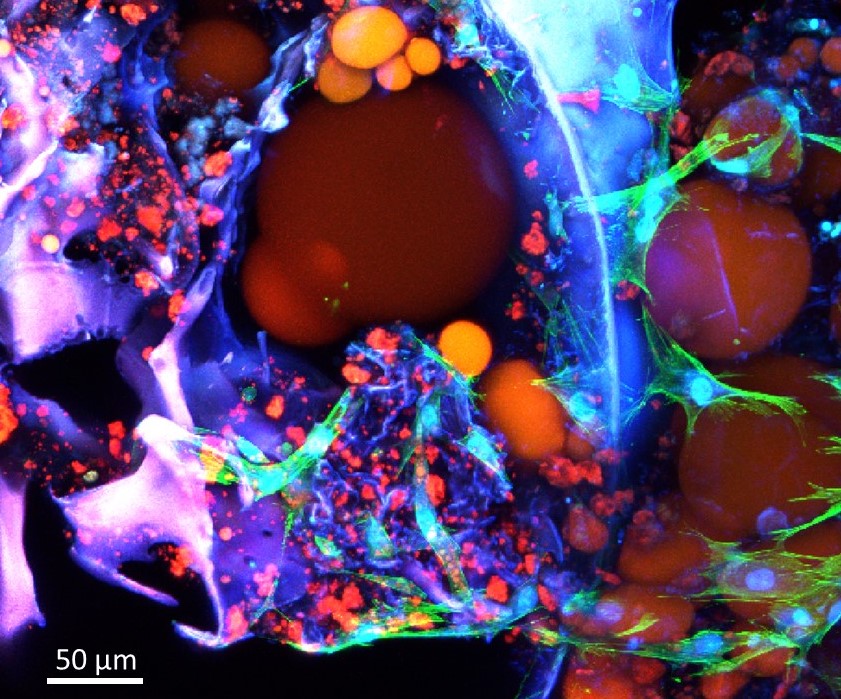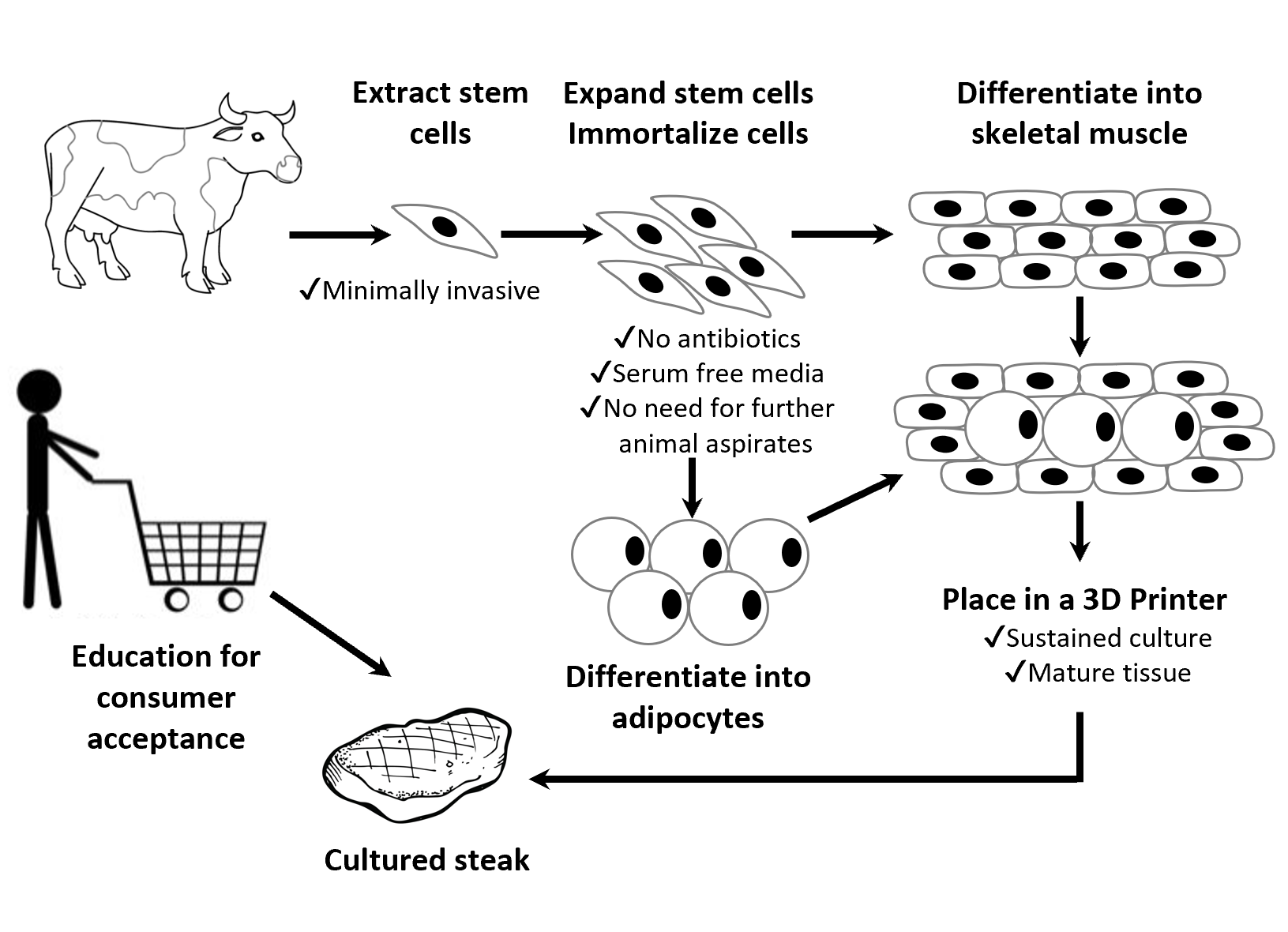High lipid content tissue engineering
There is a critical need for monitoring physiologically relevant, sustainable, human tissue engineered constructs for in vitro and in vivo applications. In the Abbott lab, we develop human microenvironments to:
- study normal adipose physiology in vitro (metabolism, vascularization)
- create adipose tissue disease models in vitro (obesity, type II diabetes, obesogens, viral interactions)
- create steototic liver disease models in vitro (to test defatting reagents)
- replace soft tissue defects in vivo
To do this, we use multiple platforms, including static and perfused (fat-on-a-chip) environments and different biomaterials - silk, repurposed decellularized lungs, and hylauronic acid hydrogels. The long term goal is to use these adipose tissue systems to inform preventative and therapeutic treatments. In particular, the lab focuses on integrating tissue engineering with biomaterial engineering.

Silk
- is a natural biomaterial used to support long term culture of adipose micro-environments in vitro and in vivo
- is a versatile biomaterial with tunable mechanical properties, biodegradability, and biocompatibility making it well suited for a wide range of tissue engineering applications
In the Abbott lab, structural changes caused by silk processing techniques are being explored to determine how they affect the biocompatibility and degradability of the biomaterial.
Long term goals include enhanced control over crystallinity, biocompatibility, and host tissue interactions.
Cellular Agriculture
The Abbott lab is developing protocols to 3D print wagyu steak with lab-grown cow cells. FRESH 3D printing is used to recreate the marbled lipid structure of beef by printing adipocytes and myocytes into an identical cut of wagyu steak.
The long term goal is to demonstrate the feasibility of printing high-end meat products without sacrificing an animal. The overall impact would reduce the need for factory farming and improve our current agroecosystem structure.

